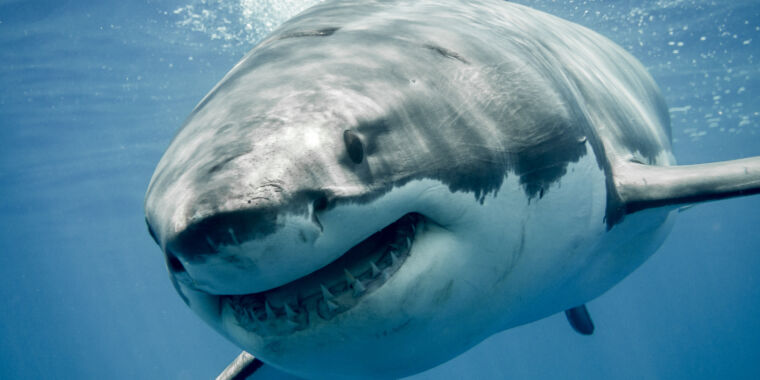A hammerhead shark less than a metre long swims frantically inside a plastic container on a boat in Sanquianga National Park, off Colombia’s Pacific coast. This is a delicate female shark. Sufiana Coronais the world’s smallest hammerhead shark, and is found locally Cornuda Amarilla–Yellow Hammerhead –Its name comes from the color of its fins and the impressive curved end of its head, which is packed with sensors that detect the movement of prey.
Diego Cardeñosa, a marine biologist at Florida International University, worked with local fishermen to capture the shark, implant an acoustic marker in it, and quickly release it back into the murky waters. The string of receivers will help track the shark’s movements for a year and map the coordinates of its habitat, valuable information for shark conservation.
The hammerhead isn’t the only shark keeping Colombian biologists busy: Cardeñosa’s mission is to build scientific knowledge to aid in shark conservation by locating shark habitats and identifying shark species. Genetic testingIt is a species traded in the world’s major shark markets.
Sharks are under threat for a number of reasons: Demand for shark fins, mainly to supply Asian markets (see box), is a highly lucrative business, generating revenues of $1.5 billion between 2012 and 2019. In addition to this, sharks are included as bycatch (fish caught unintentionally in the oceans). FisheriesCombined with the expanding market for shark meat, millions of sharks die every year. In 2019 alone, The total death toll is estimated at at least 80 millionOf these, 25 million are endangered species. In fact, in Hong Kong alone, the main shark fin market, Two-thirds of the shark species sold there are endangered.That’s according to a 2022 study led by Cardeñosa and molecular ecologist Demian Chapman, director of the Shark and Ray Conservation Program at Mote Marine Laboratory in Sarasota, Florida.
Despite decades of laws enacted to protect sharks, their future remains difficult. In 2000, the U.S. Congress passed the Shark Finning Ban Act, and in 2011, the Shark Protection Act. These laws stipulate that all shark fins landed by fishermen must remain naturally attached, aiming to end the practice of stripping off fins and returning them to the ocean in pieces to die on the ocean floor. 94 other countries have similar regulations in place.
Perhaps the main political and diplomatic lever for shark conservation is in the hands of the Convention on International Trade in Endangered Species of Wild Fauna and Flora (CITES), an international organization made up of 183 member states plus the European Union. The treaty gives three levels of protection, or appendices, to more than 40,000 species of plants and animals, imposing trade bans or restrictions depending on the threat posed.
Sharks Washington Convention In February 2003, a basking shark (Setohinus Maximus) and whale sharks (Rhincodon typesThe number of protected species was subsequently increased to 12, and has since increased significantly. November 2023 An additional 60 shark species have been added to Appendix II of CITES.
But do these tools really protect sharks? To find the answer, researchers have been working for the past decade to develop tests that can easily identify what types of sharks are being traded, as well as tests that can determine if protected species continue to be overfished. Researchers have also focused on studying shark populations around the world to provide the information needed to establish sanctuaries that help protect these animals.


